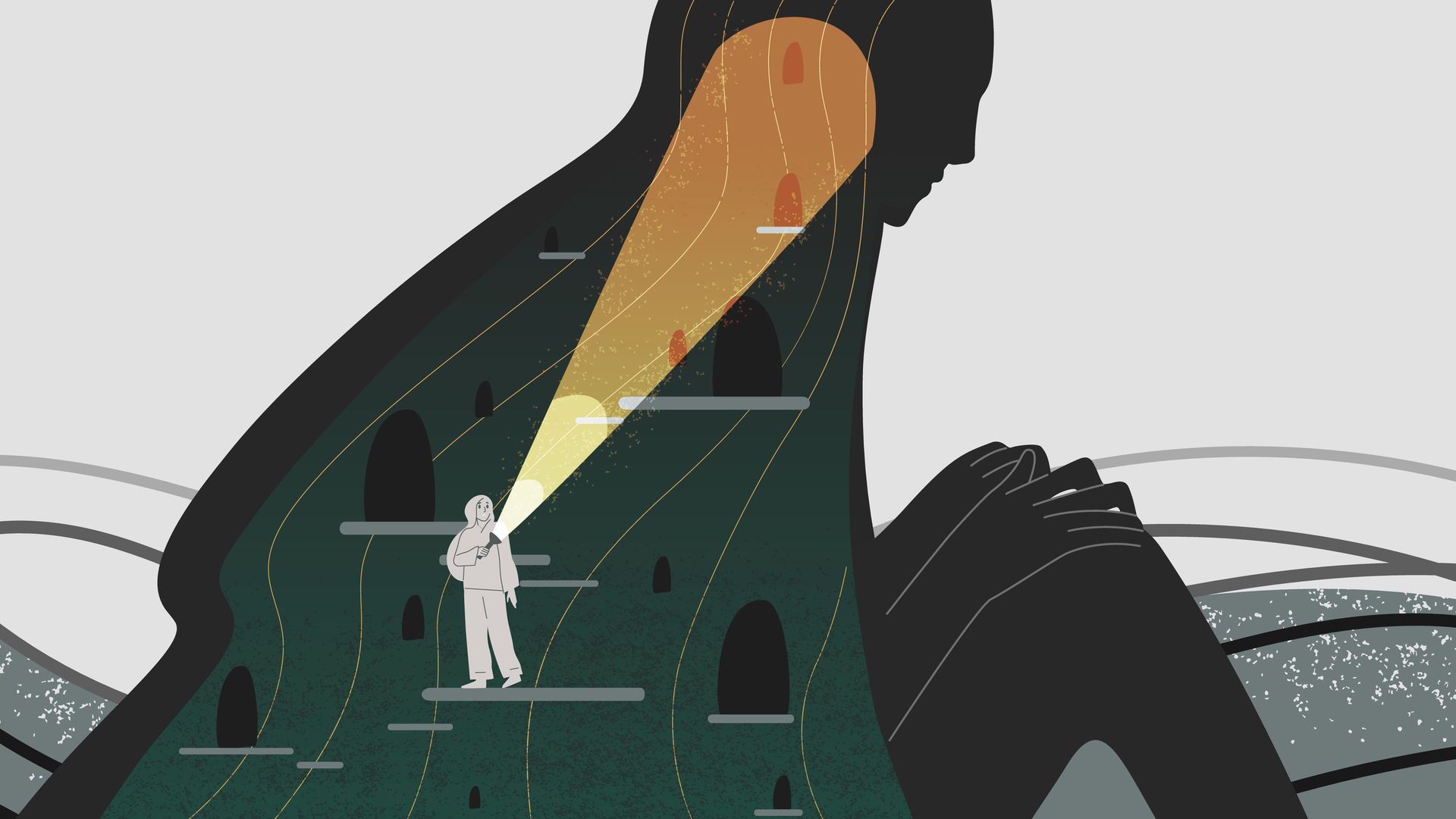Diving into the depths of the self - self-observation as a recipe for success
The observer mindset specifically addresses individual thought patterns and aims to change perspective in terms of content. It leads to sustainable learning to make unconscious thought processes conscious to better recognize and use choices even in difficult situations. In the course of our lives, we all develop thought patterns that are activated in certain conditions. Behind them are our very personal views, beliefs, (pre-)judgments, opinions, associations to certain people and events in our lives. These repeat themselves in our lives and grow together to form a network in which they are active—triggering situations of automated thought processes. Their adverse effects on our behaviour and emotions are known to each of us from everyday life. Accordingly, it is counterproductive to counter fear of failure and the striving for perfectionism by proceeding in a detail-oriented manner in complex decision-making processes and thereby improving as many parameters as possible. Instead, one should automate a sovereign and self-confident attitude to make decisions with an overview.
It is equally unhelpful to constantly think about possible failure during a speech instead of mentally planning for success. Or, in a 'critical' situation involving compliance issues, for example, to be guided by beliefs such as "No one will notice" or "Everyone does it, don't they?" instead of reflecting in good time on the course of action and possible consequences.
Our thought patterns are often learned over decades, and the resulting behaviours run automatically. Thoughts are perceived as uncontrollable if they cannot be turned off on command. The consequence: one follows the automatisms. An example from my compliance coaching sessions: thought patterns that shape non-compliant decisions ("Everyone does that," "No one will notice"). They are often used as an 'excuse' - the interpretation 'socially accepted' quickly becomes a fig leaf.
Spot on
To change thought patterns, suitable techniques and sustainable training are required and the will to change. One important step is awareness. The better we recognize our thought patterns, the easier it is to break away from them. The chaos and contradictions that arise in delicate situations can be sorted if we sort ourselves out. The most effective approach is to make the automated, intuitive processes conscious - to do this, we must learn to observe and classify them. Through conscious observation, we put the thought patterns, figuratively speaking, in the spotlight. Thus, they can no longer hide in the subconscious and cause damage unnoticed. The moment we observe them regularly, the camouflage is blown, bringing the processes to light. When we automate this process, we sharpen our thought patterns and learn to make decisions more consciously. We shift from being victims ("I had to grease him because of the circumstances ...") to be co-creators. The good news is that this is possible at any time and for anyone. It is a challenge, no doubt.
Your individual training program
To change or improve the current situation, it's a matter of trying something new. Have you ever asked yourself, "Can 'this' be done differently?" Or, "Is there another perspective?" Yes, 'one' can! In my executive coaching sessions, I work with my clients to develop techniques for integrating the observer mindset into everyday life individually. For everyone, this path is different. It's like in sports or music. The training and exercise methods are other. But they all have one thing in common: Only those who train regularly become masters.
Executive coaching, for example, is about recognizing choices - even in difficult situations. The feeling of 'control' automatically increases our satisfaction because we suddenly have things in our own hands. When we train the observer in us, it adds a new dimension to life. Because suddenly we are not living in a movie for which others write the script, but we are spectators and observe what happens. From the (newly) gained meta-position, we succeed much more efficiently and effectively in intervening in our actions, controlled by patterns. By becoming aware of our thought patterns, we take the first decisive step towards actively interfering in our decision-making process.
Who is about to blow up?
In the course of their professional lives, managers have learned to behave logically and rationally in their daily professional decisions within the organization. This is precisely why it is essential to use these exercises to become aware of how strongly the irrational human momentum takes over the helm for each of us, even in professional decisions.
We thus have the chance to recognize that our control centre has a kind of action software that we have shaped or written in the course of our lives. It is also this action software that we call up unconsciously in decision questions. Our perceptual filters encode it. These, in turn, have their basis in our values and beliefs. Because the final decision - 'do I blow up or not, do I act compliantly or non-compliantly - is a human decision, at least for now. If you simply write down your patterns - I develop exercises for this with my clients in Executive Coaching - you can easily read out the data of your action software afterwards. Or, to put it another way: You can recognize what makes you "tick" based on your notes.
The key
The key lies in recognizing, reflecting and actively influencing the 'cherished' automatisms. Through the daily training of observation, it is possible to pause at any time, even in difficult situations, as a matter of course, to maintain one's posture and then act according to one's own chosen directives. And with each time this process is carried out, it develops more and more into a routine. Promise!
